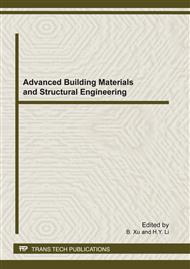p.62
p.67
p.71
p.75
p.79
p.83
p.88
p.93
p.97
Exploration on the Teaching of the Course of Introduction to Civil Engineering Based on Engineering Materials
Abstract:
with the rapid development of national economy, the construction of our country and technical personnel requirements also produced corresponding changes, the demand for interdisciplinary talents gradually increased to the higher education has put forward higher requirements. The direction of the civil engineering course reform is changed to "large civil specialty” as the basic starting point, combine with the reform of talented person training mode, adjust the students' knowledge structure. The task of introduction to civil engineering is to cultivate the students' awareness of civil engineering major, make low grade students understand the civil engineering involved in the field of the content, methods, achievements and development situation about civil engineering comprehensive from the visual angle of safe academics, social and security technology, economy and management unity. The new understanding of civil engineering specialty, enhances the student to study the interest of engineering knowledge, broaden their knowledge. According to the positioning of the course, in the teaching process optimization of teaching materials, reasonable allocation of hours, adopt the suitable way of teaching organization teaching, and achieve good teaching results
Info:
Periodical:
Pages:
79-82
Citation:
Online since:
February 2012
Authors:
Price:
Сopyright:
© 2012 Trans Tech Publications Ltd. All Rights Reserved
Share:
Citation:


